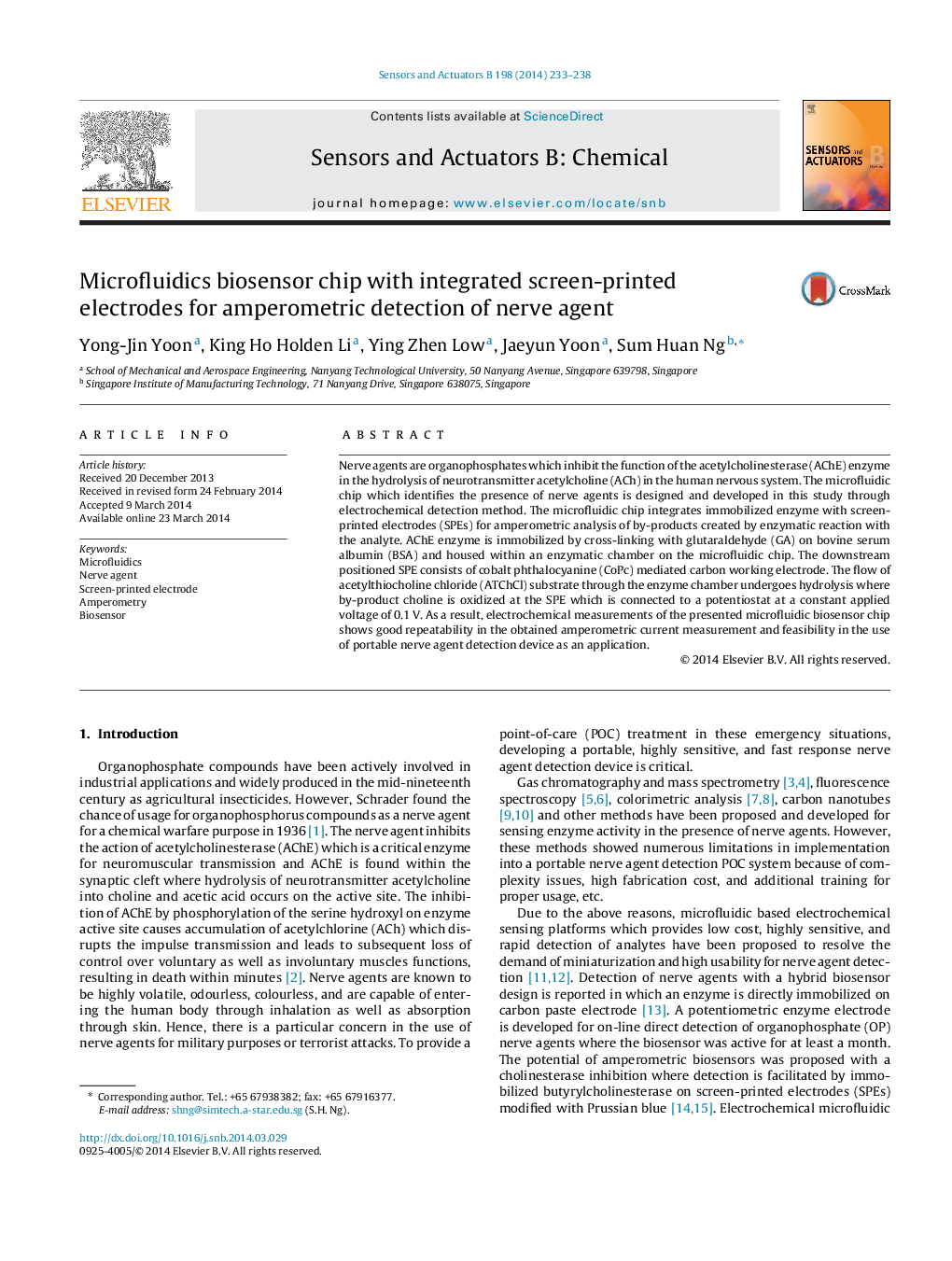| Article ID | Journal | Published Year | Pages | File Type |
|---|---|---|---|---|
| 742812 | Sensors and Actuators B: Chemical | 2014 | 6 Pages |
•This paper presents the fabrication and amperometric electrochemistry analysis of a microfluidic detection method.•The microfluidic chip was fabricated from PMMA incorporated with immobilized enzyme chamber separated from SPEs.•A microfluidic biosensor chip for amperometry detected nerve agents by showing repeatability in amperometry current measurements.
Nerve agents are organophosphates which inhibit the function of the acetylcholinesterase (AChE) enzyme in the hydrolysis of neurotransmitter acetylcholine (ACh) in the human nervous system. The microfluidic chip which identifies the presence of nerve agents is designed and developed in this study through electrochemical detection method. The microfluidic chip integrates immobilized enzyme with screen-printed electrodes (SPEs) for amperometric analysis of by-products created by enzymatic reaction with the analyte. AChE enzyme is immobilized by cross-linking with glutaraldehyde (GA) on bovine serum albumin (BSA) and housed within an enzymatic chamber on the microfluidic chip. The downstream positioned SPE consists of cobalt phthalocyanine (CoPc) mediated carbon working electrode. The flow of acetylthiocholine chloride (ATChCl) substrate through the enzyme chamber undergoes hydrolysis where by-product choline is oxidized at the SPE which is connected to a potentiostat at a constant applied voltage of 0.1 V. As a result, electrochemical measurements of the presented microfluidic biosensor chip shows good repeatability in the obtained amperometric current measurement and feasibility in the use of portable nerve agent detection device as an application.
